INTERESTING SPOTS
- ???label.link.share???
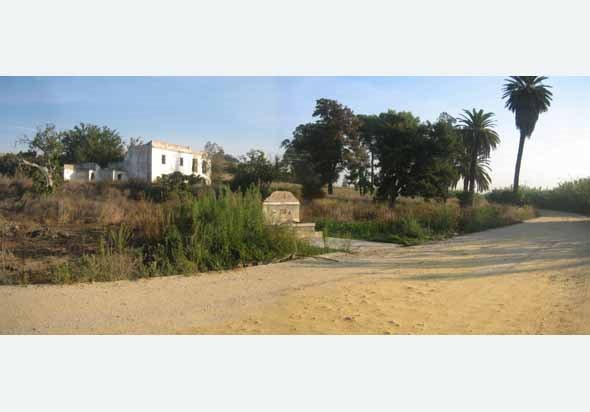
The Regüela fountain is located on the road to Gelves, in the vicinity of the hacienda of the same name, dated from the beginning of the s.XIX. It is part of the “Ruta del Agua” (Water Route) that runs parallel to the stream Porzuna, tributary of the river Guadalquivir. At this point, the aljarafeña cornice has hidden our beloved municipality so we only see countryside around us.

The eight-pointed stars, named as “luceros”, which have become one of the symbols of identity of our municipality, are in the vault of the Arab Baths, dating from the Almohad period, XII-XIII, and declared of Cultural Interest. These are unique in rural surroundings in the province of Seville, they were used, in addition to personal hygiene, to socialize and relax, almost as we use the archaeological site today.

Enjoy the wonderful fountains of the Hispano-Muslim inspired garden located in the site of the Arab Baths. Clad in coloured tiles and connected by channels, they make us enjoy the feeling of peace that transmits the pleasant sound of its waters. During this period, Palomares del Río was known as Al-Rauz, meaning the garden, because of the orchard in the area. The site, unique in the province of Seville, dates from the Almohad period, XII-XIII.
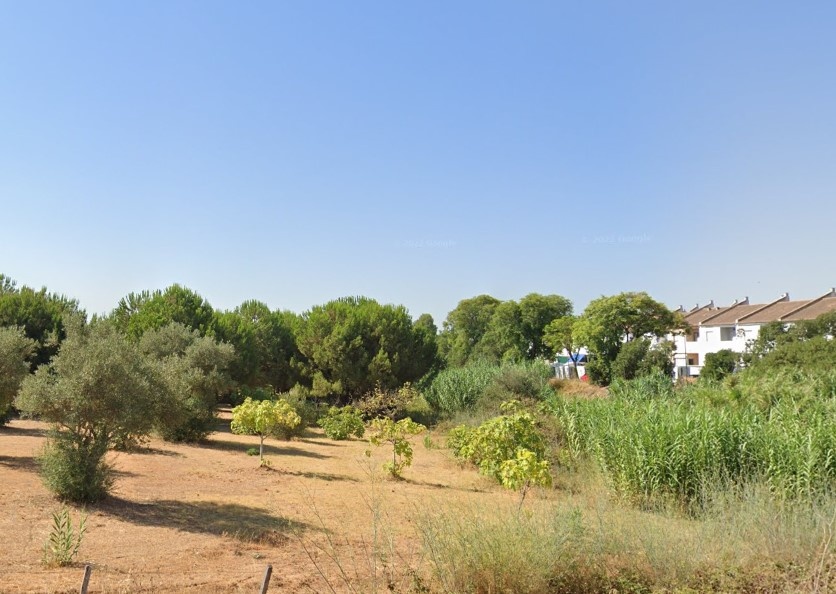
The Caño Real stream reaches our municipality from Mairena del Aljarafe. In the past days, it was the town main source of water, as evidenced by the proximity of the Arab Baths. Its riverbed has recently been rehabilitated, providing a peri-urban park for the citizens enjoyment. Here we can enjoy the great vegetation of reeds that surrounds us and that invites us to take a rest. Following its course to the south we reach the source of La Regüela to join the road of Las Teatinas, joining here the metropolitan green corridor.

The Hacienda Casa Alegre dates from the 16th century and is the best preserved in our town, since it maintains almost all its dependencies: the manor yard, the patio of labour, the oil mill and the house. Its entrance is a mixture of neoclassical and regionalism style and is flanked by two cast iron cannons from the 19th century. The facade presents the white colour of lime and red, very characteristic in the aljarafeñas haciendas. It preserves the Star of David, memory of the deportation of Jews that took place from the Sevillian Jewish quarter to our town after the reconquest. At that time our municipality was known as "Paterna of the Jews".
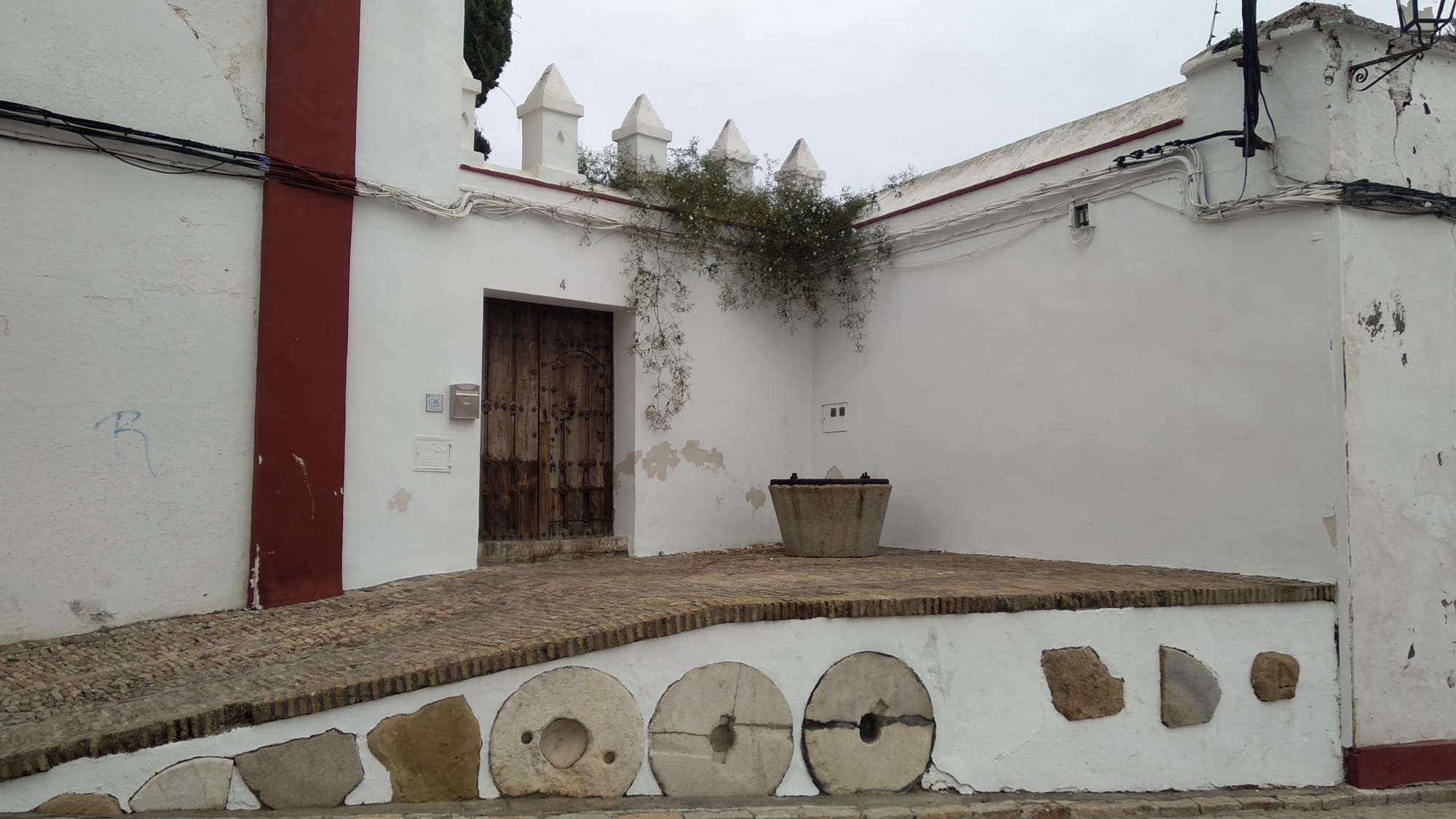
Located in Calle Iglesia, Hacienda El Molino, dated from 18th century, was originally joined to Hacienda Casa Alegre. It has a counterweight tower, used in the past to obtain oil. After the latest renovations, its owners have placed some impressive millstones on the access ramp as decoration. Another very special corner of our town.
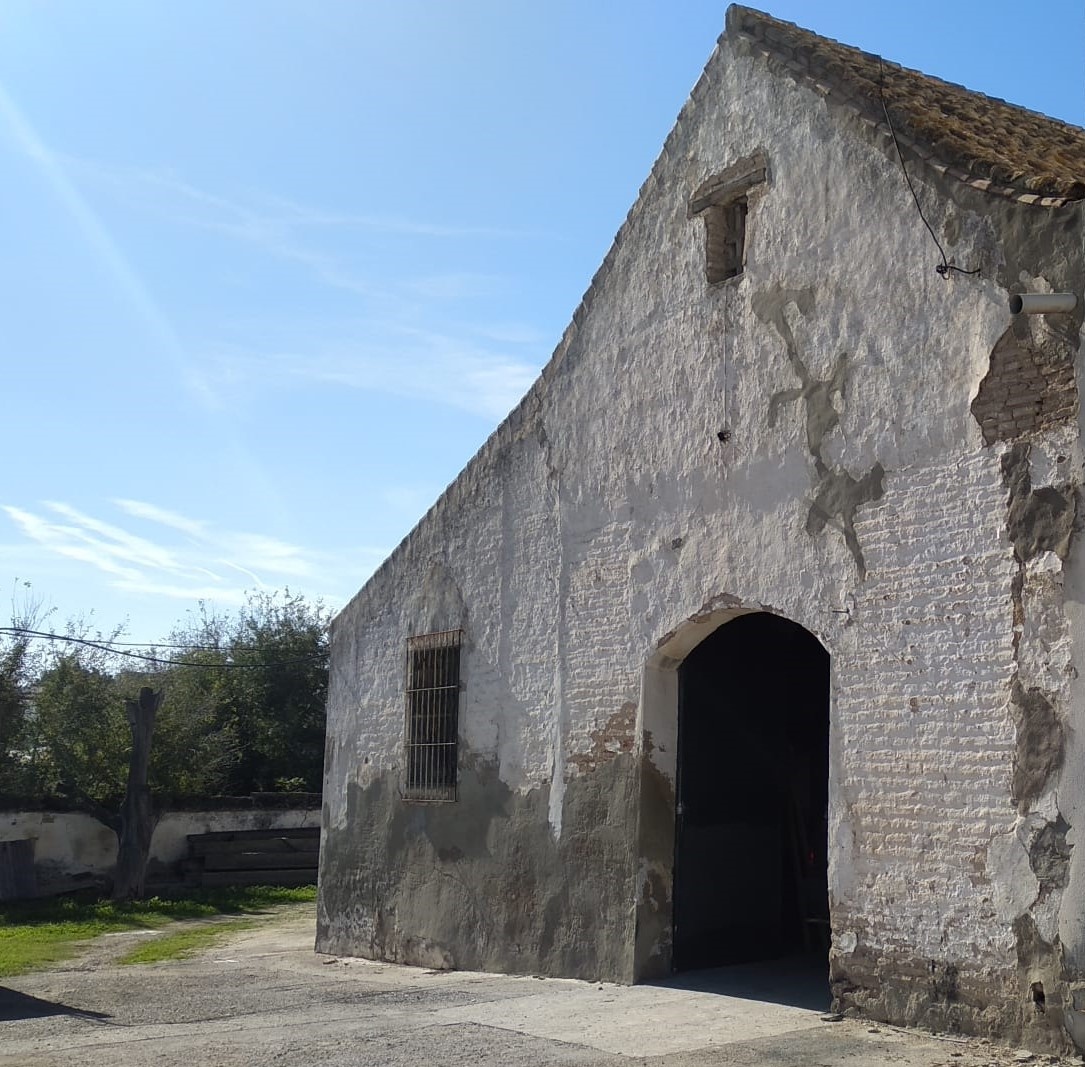
The Hacienda de Córdoba is one of the oldest buildings in the town and possibly its origin, although today, there is only one mill nave of the s.XVI. Built in Spanish-Muslim times on the remains of a Al-Muniat or country house.
This building is considered of great importance for the Eucharistic Missionaries of Nazareth settled in our town, because its founder, San Manuel González García, stayed there during his visit to Palomares back in 1902.
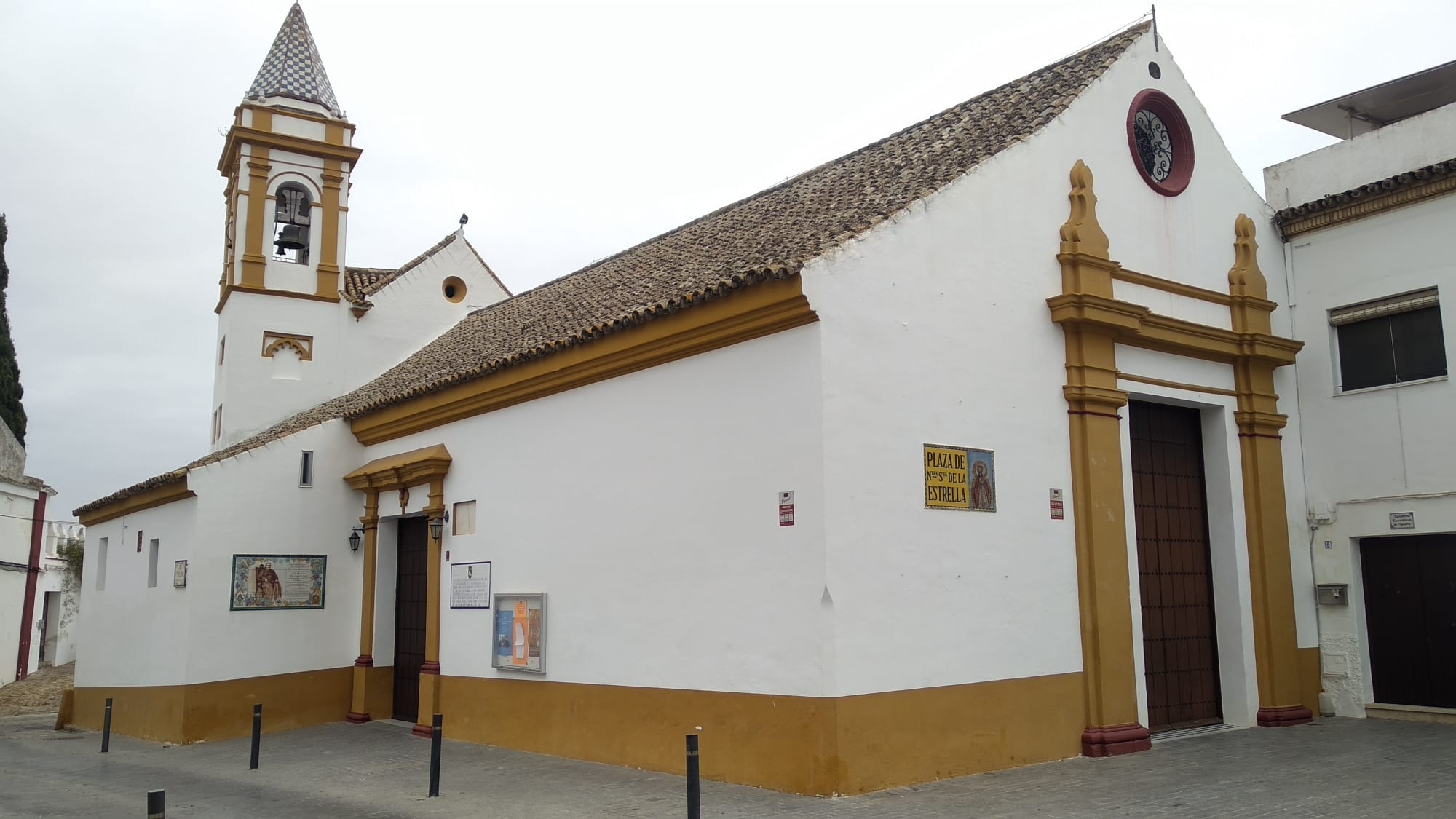
Both, the church of Ntra. Sra. De la Estrella and its formidable bell tower are of Mudejar style, 13th century. Prove of it are the 7 horseshoe and polylobed arches that are appreciated in the first body of its tower. The second body, built after the Lisbon earthquake of 1755, is in Baroque style and is topped with an orthogonal spire covered by the characteristic white and blue Sevillian tiles.
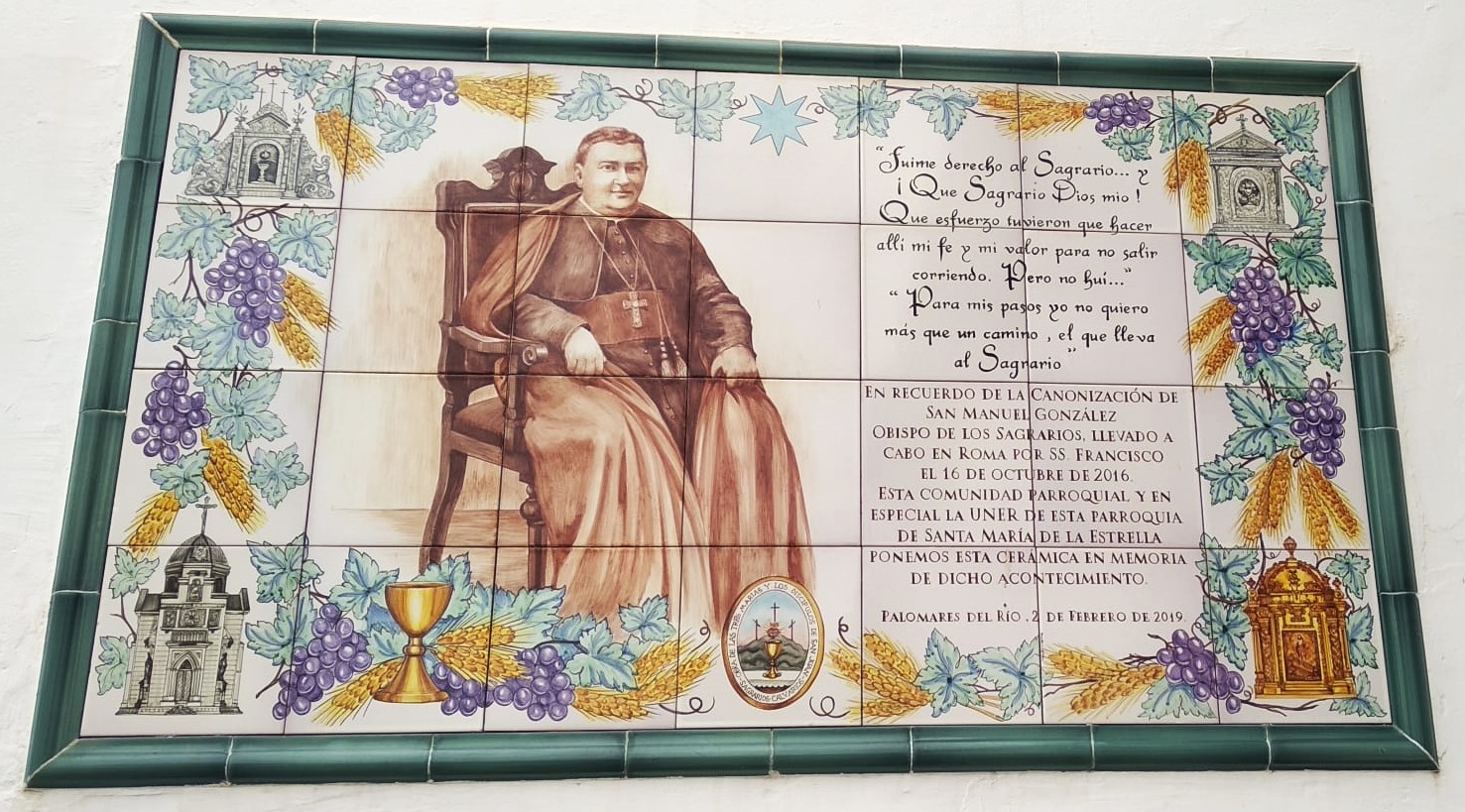
This beautiful tile commemorates the canonization of San Manuel González and is located on the facade of the Church of Ntra. Sra. de la Estrella. Its corners represent the four most important tabernacles in his life: that of Palomares del Río, that of Huelva, where he was archpriest, that of Malaga, where he was bishop and that of Palencia's cathedral.
This saint visited our town on 2nd February 1902 on a mission given by the Archbishop of Seville. He went to the parish and, kneeling in front of the abandoned tabernacle, he thought of the number of abandoned tabernacles that would be in the world, receiving the charismatic grace that transformed his life and guided his Eucharistic works. He was the Eucharistic Restorative Union founder, a religious movement integrated among others by the Eucharistic Missionaries of Nazareth, who continue to be present in the active life of our municipality.
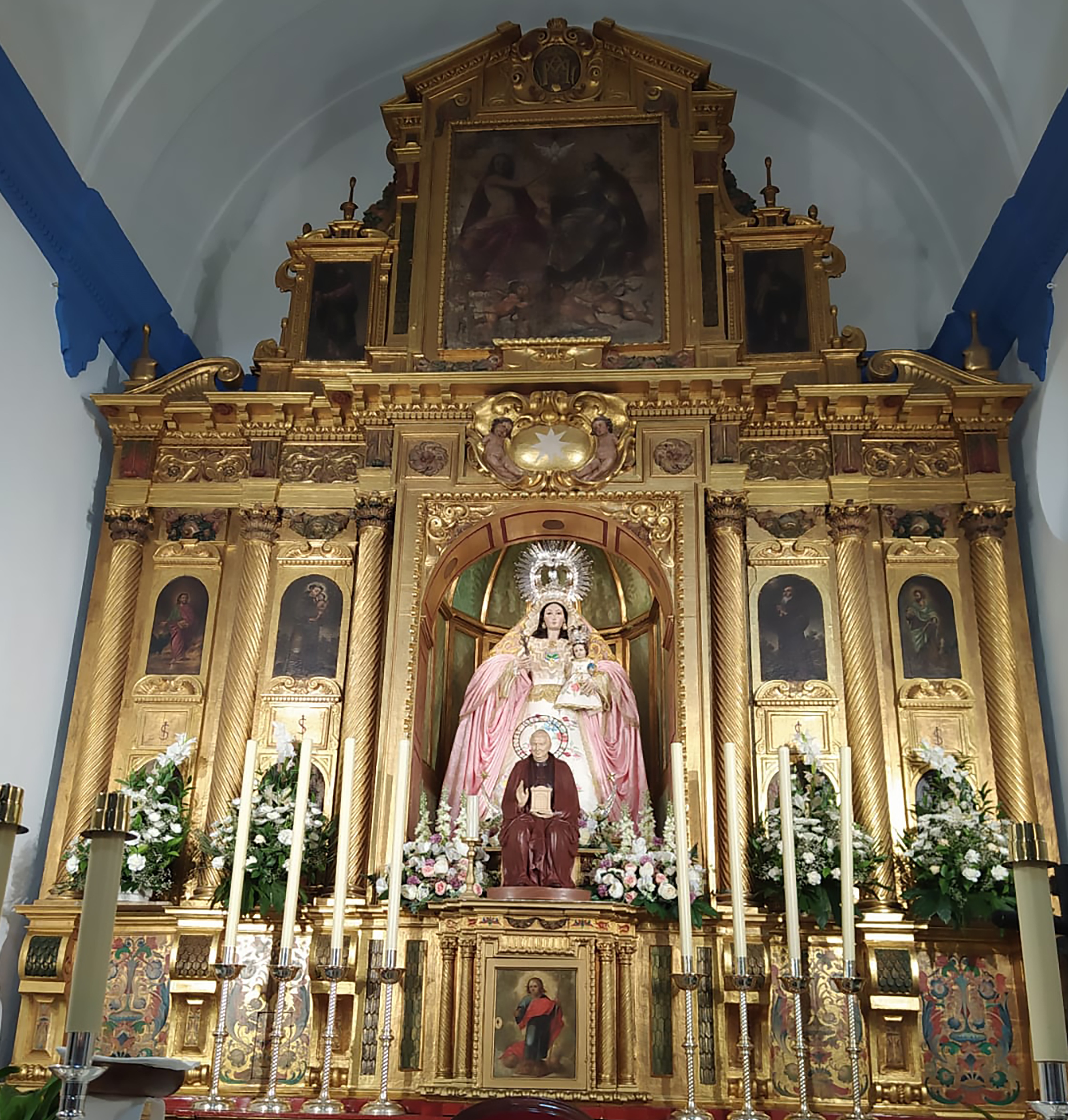
Our gorgeous church main altarpiece was contracted in 1588 to the altarpiece and Mannerist sculptor Miguel Adán, being transformed into baroque style in the 18th century. It presents San Estanislao de Kostka, San Antonio de Padua, Santa Rosa de Lima and San Francisco de Paula paintings, all from the same century, as well as the Virgin de la Estrella, patron saint of the town, which presides over the central niche.
The Child Jesus painting on the Tabernacle door as well as those of the attic, representing Saint Peter and Saint Paul, are from the 16th century and were made by the formidable painter Vasco Pereira. We also know that the altarpiece was gilded by Juan Gómez Couto in 1664.
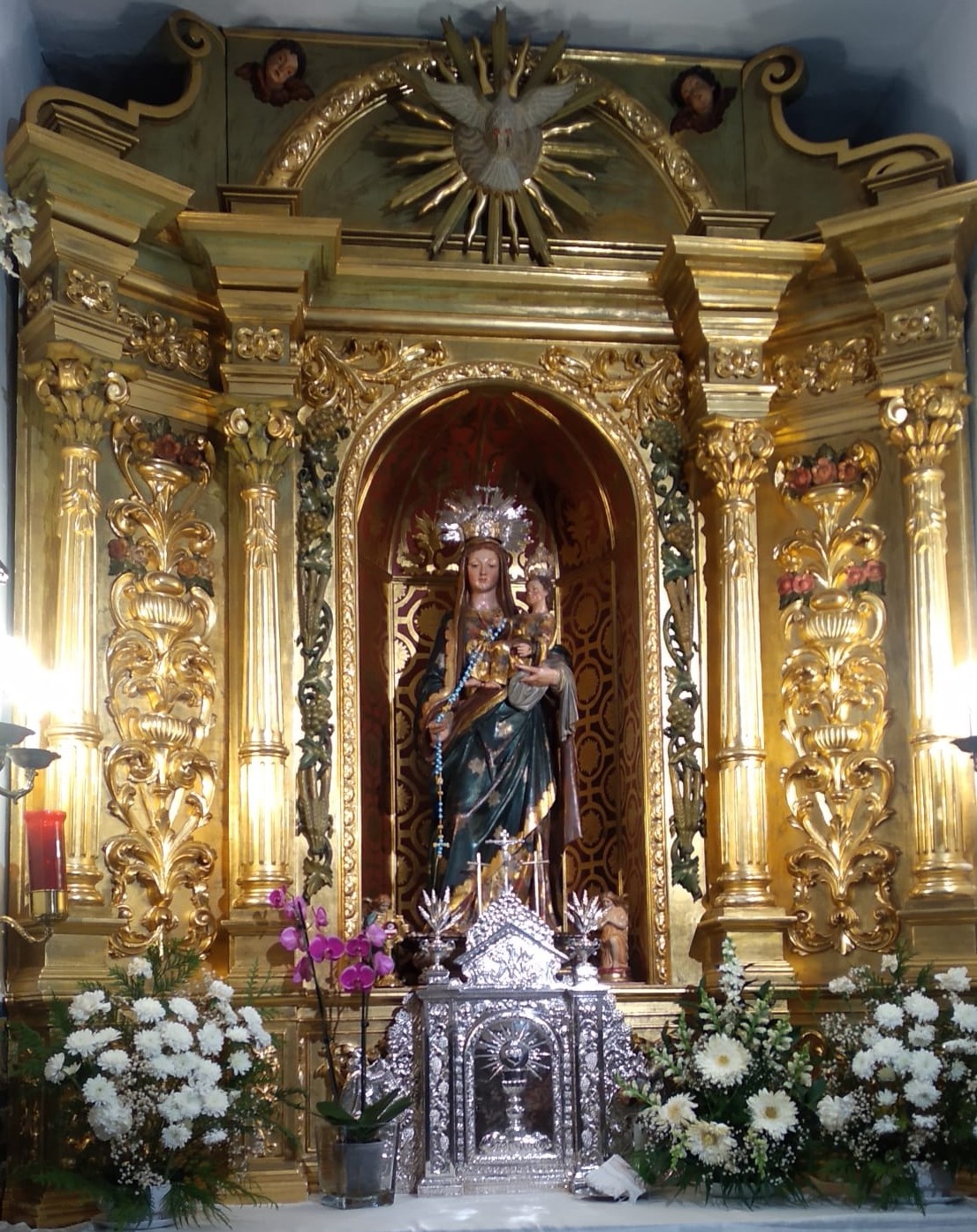
In our beloved Church of Ntra. Sra. de la Estrella, added to one of the aisles, we find the beautiful Tabernacle Chapel. It contains the Marian image that originally presided over the main altarpiece. It is the Virgin del Rosario, of great beauty and elegance, work of Miguel Adán of 1588, although its current polychrome dates from the 18th century.
If we look at her robe, we can see stars. This is just because before being Virgin del Rosario she was Virgin de la Estrella (Star). The magnificent silver Tabernacle is attributed to the prestigious Sevillian goldsmith Fernando Marmolejo, who stood out especially for making the Basilica of the Macarena dressing room.
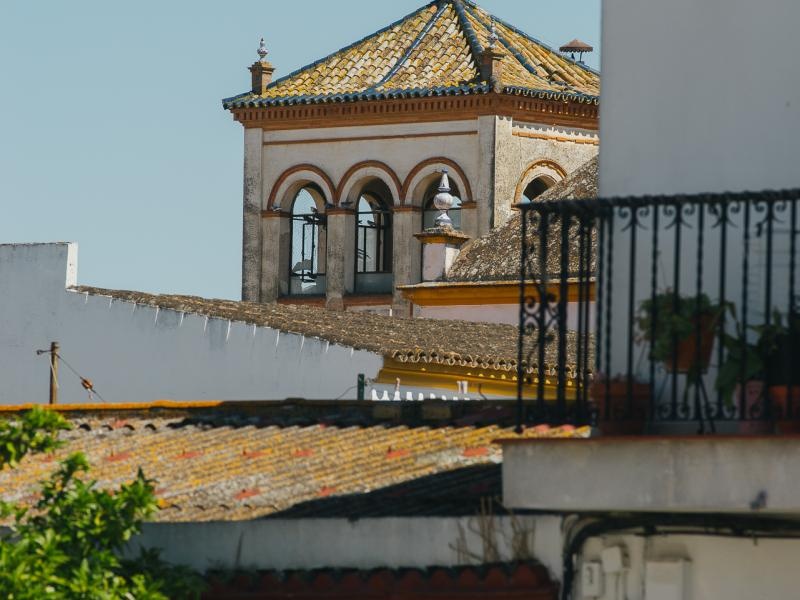
Hacienda San Rafael, originally from the 13th century, was located on the block that goes from Iglesia St. to Antonio Machado St. Unfortunately, the only remains left are the main portal of access located in front of the church and its lookout-tower. This one is dated from the early 20th century, and it is attributed to the well-known Seville architect Aníbal González (author of the Plaza de España in Seville). The tower is topped with a viewpoint that is sheltered under a four-sided tiles roof with ceramic ornaments. It is supported on half point arches on pilasters. It is a unique example of Andalusian regionalist architecture.
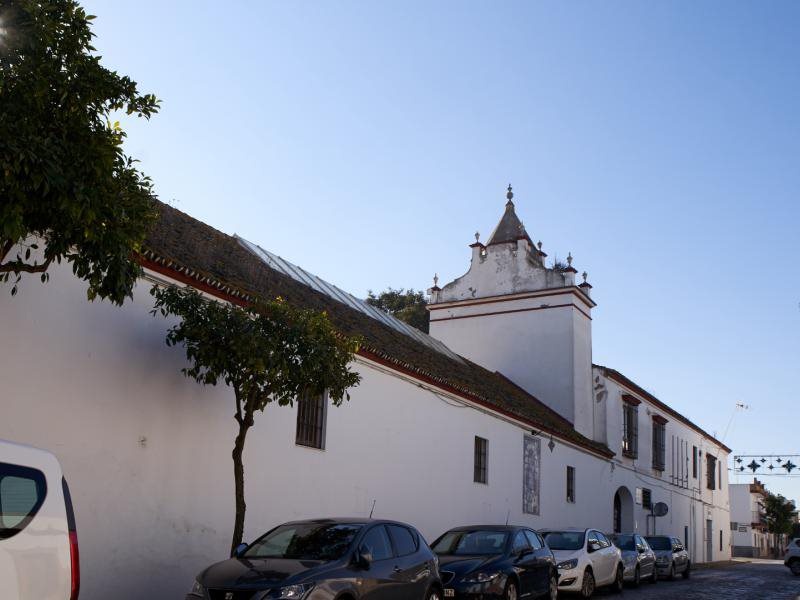
Hacienda Ulloa manor house (17th century) and oil mill nave (18th century). The mill counterweights tower dates from 1798. It is rectangular shaped and has a baroque finish: octagonal spire, small crenels and nine ceramic ornaments. Inside the building we find the original wooden beams as well as the press stone.
In its main façade we can watch an exquisite representation in ceramics of Ntra. Sra de la Estrella, Palomares del Río Patron Saint. It is coloured in blue tones according to the Sevillian traditional tile style. It was made by the master ceramist Mariano Pérez, neighbour of our town.
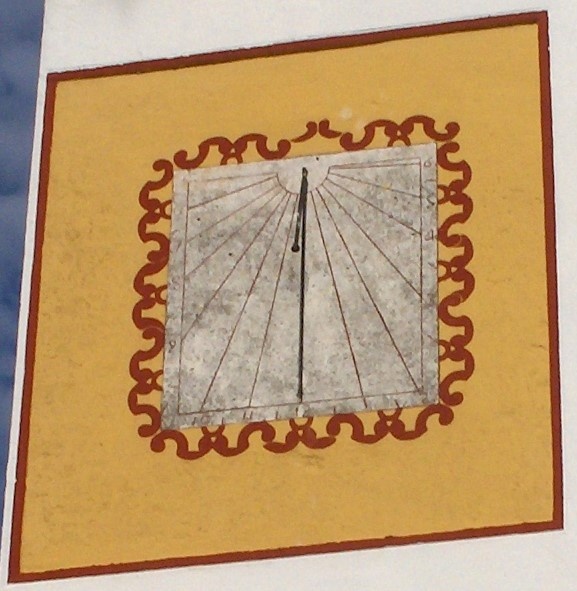
This Sundial is located at the top back of the Hacienda Ulloa manor house, overlooking the Plaza de las Moreras. It was restored during the works made in 1991.
It is a declining vertical clock. It is engraved in stone and has Arabic numerals from 6 am to 6 pm. The timelines are painted maroon, and the hand ends in a small ball.
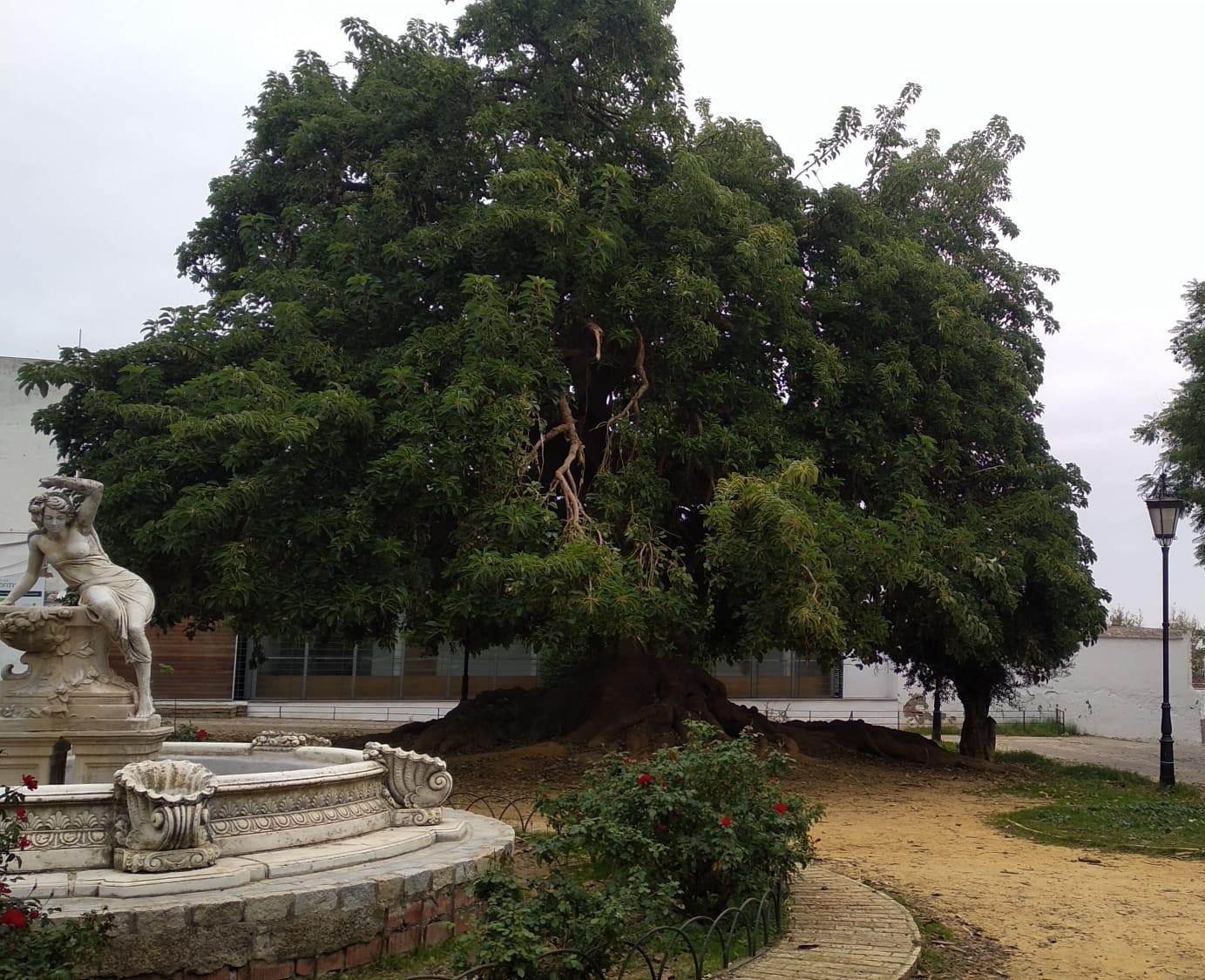
Located in Las Moreras Park (the old Hacienda Ulloa farmyard), just in front of the Casa de las Luces, this beautiful "tree" was brought from Cuba in some of the trips that were made in the 90s on the twinning with the Cuban municipality of Batabanó.
It is an ombu or bellasombra, a very curious species, because, although it has arborescent shape, including a thick trunk that reaches a height of 20 meters, a wide crown of up to 15 meters and large visible roots, it is a giant grass.

The Hacienda Ulloa’s oil mill dates from the 18th century. The pine wooden beams are original. As a curiosity, you can read inscribed the date of placement, "Year of 1798" on the one that holds the mill chapel.
It is thought that the vessels are of Roman origin. They appeared after the first building rehabilitation works in 1991, since they were buried underground. They were used to decant olives.
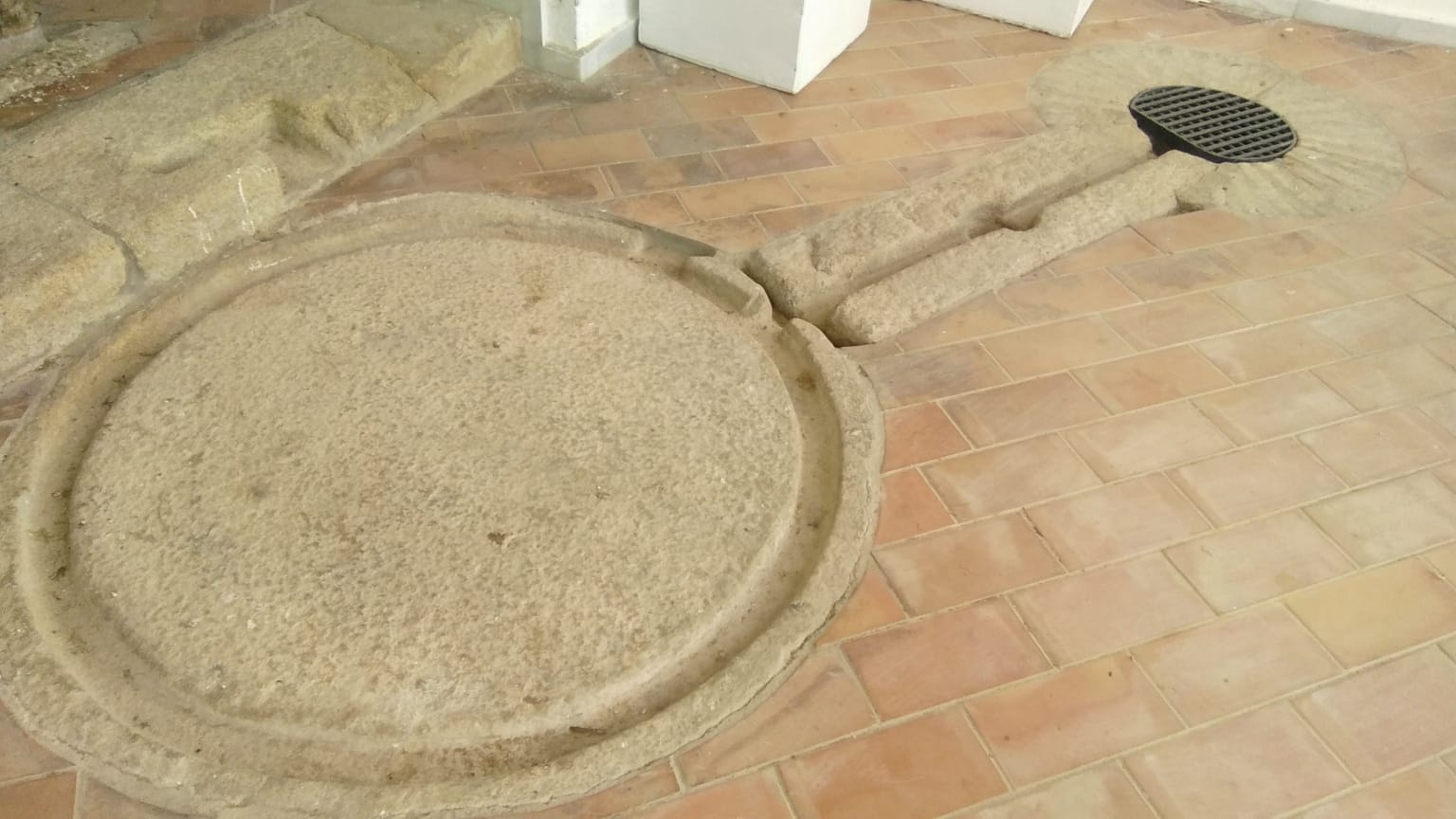
This olive press stone is located at the Hacienda Ulloa’s oil mill next to the counterweight tower. Above it, the workers placed a "tower" of olives and esparto carpets in layers. This “tower” was pressed by the mill stone, then, the olive juice fell on the furrows heading towards the vessels where the oil was decanted.
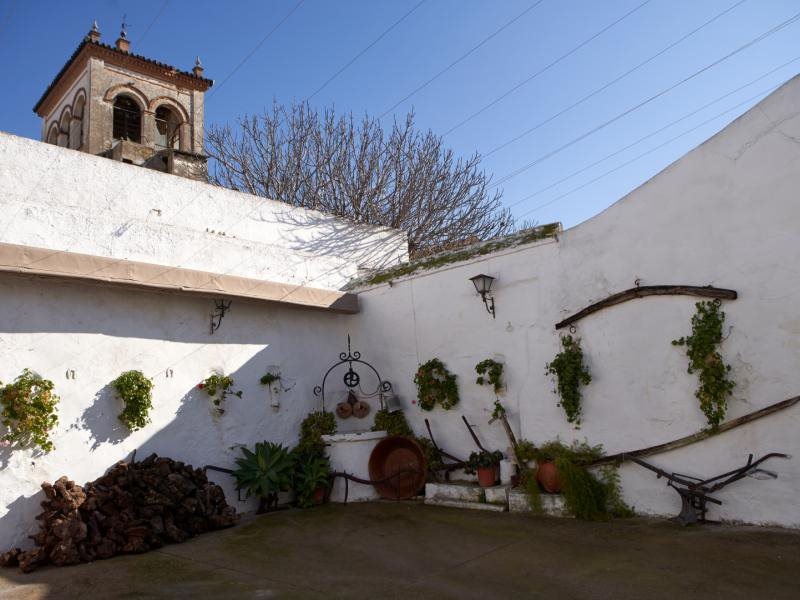
Hacienda Santa María’s very well-preserved organising courtyard. It is located on Cortinales St. You will find it once you enter through its emblematic Baroque doorway, with a lowered arch on pilasters finished in a tile. Dating from the 18th century, it was part of the Hacienda San Rafael, although it is unknown when they separated. The oil mill nave and its counterweight tower are in good condition. It currently houses a restaurant, so you can "visit" it easily while enjoying the local gastronomy.
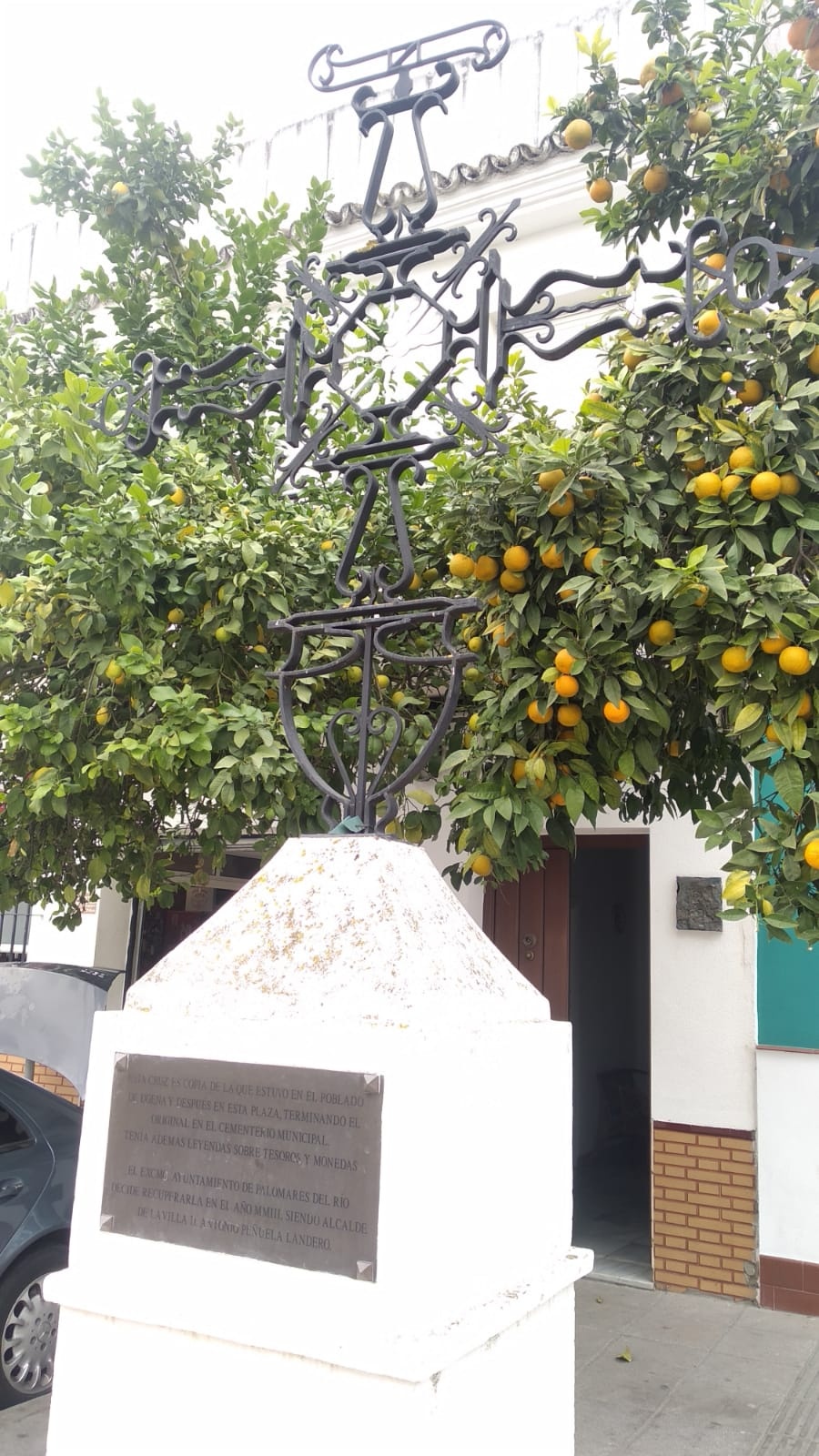
The original cross was placed at the village of Ugena’s hermitage esplanade. Later, when it was abandoned, it was moved to the current Plaza de Colón, formerly known as "de la Cruz". Currently, the original one is in the municipal cemetery, remaining a copy of it in the square on pedestal. This copy was made by the local blacksmith Marcelino Gómez.
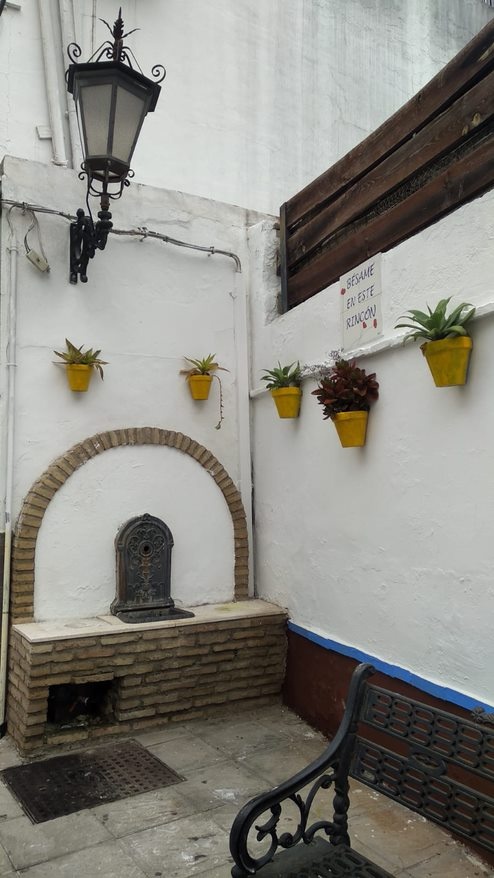
This spot, popularly known as "El Rincón del Beso" is in Avda. de Almensilla. Decorated as a typical Sevillian courtyard with plants and flowers, our neighbour, Concha Aido, takes care of it, fulling this peculiar place with colours. Water ran through the fountain in the past but due to sanitary reasons it is dry nowadays.
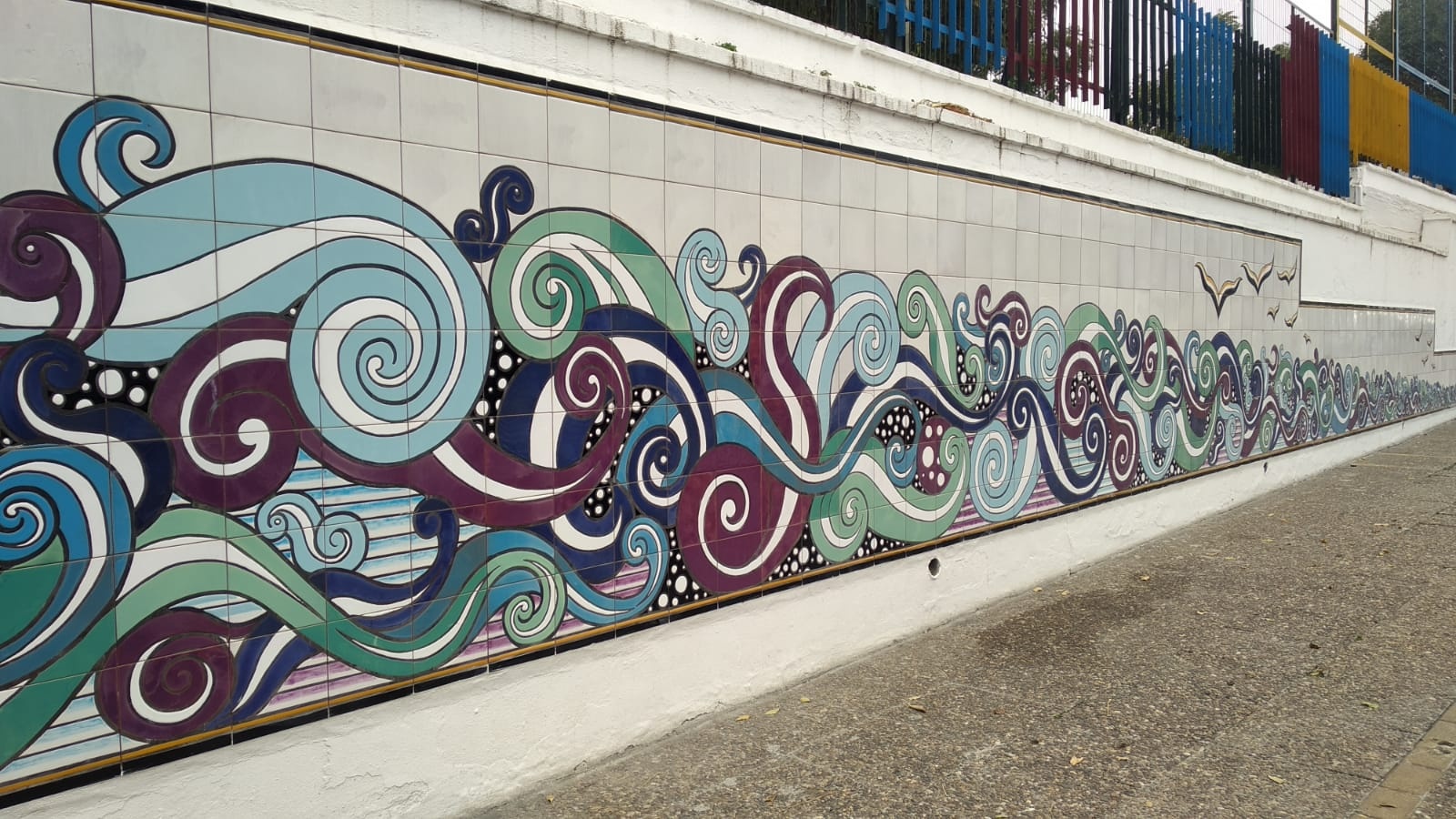
This ceramic mural is placed at the CEIP Vicente Alexaindre outside fence, at the town entrance. It was made by the master ceramist Mariano Pérez, a local resident, using the dry rope technique. It represents the sea waves with its characteristic shapes and colours. You can also see some gulls fluttering.
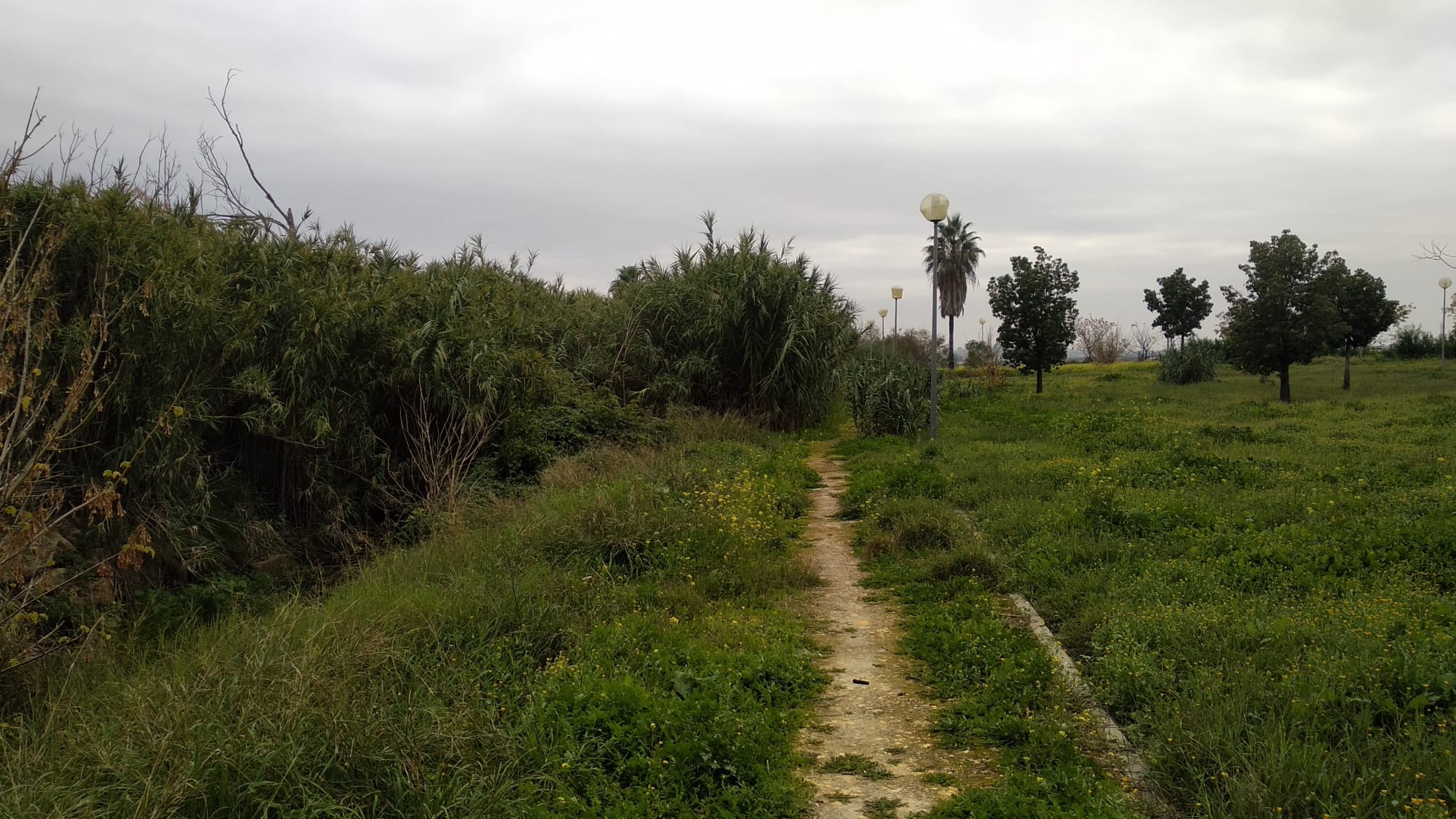
As part of the Water Route, we find the peri-urban park of Razo de Ugena, whose name is due to the stream that flows through it. From here we can continue our walk along the Metropolitan Green Corridor towards the neighbouring town of Coria del Río through the Ugena Cordal or Camino de la Isla. The Ugena stream flows into the Rio Pudio stream, a Guadalquivir River tributary.

